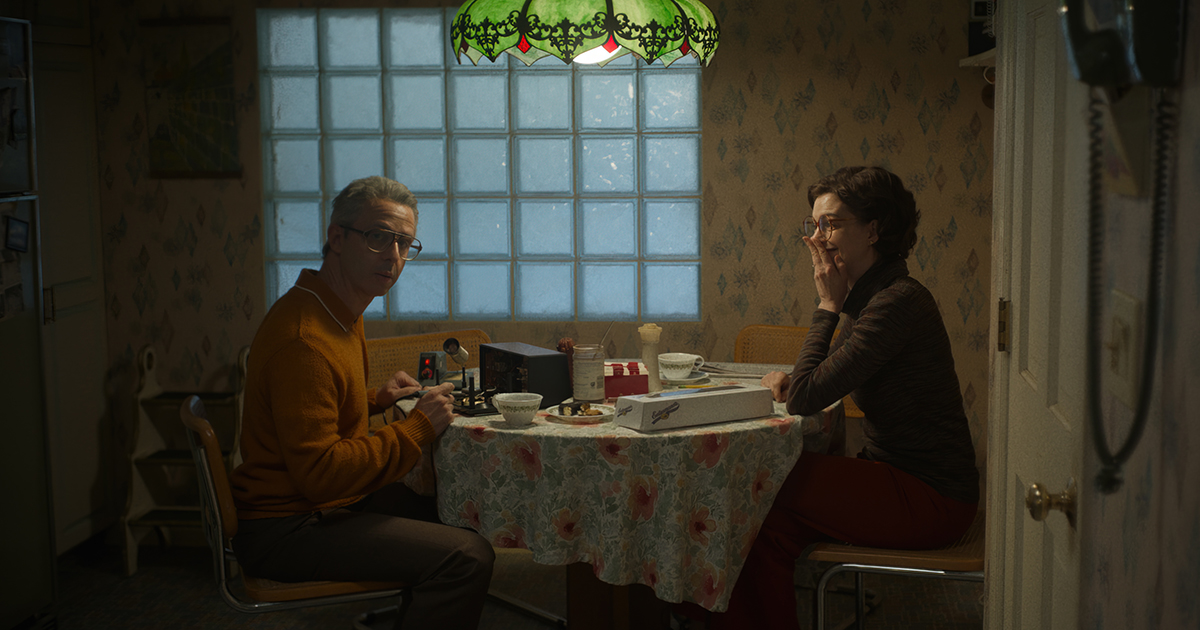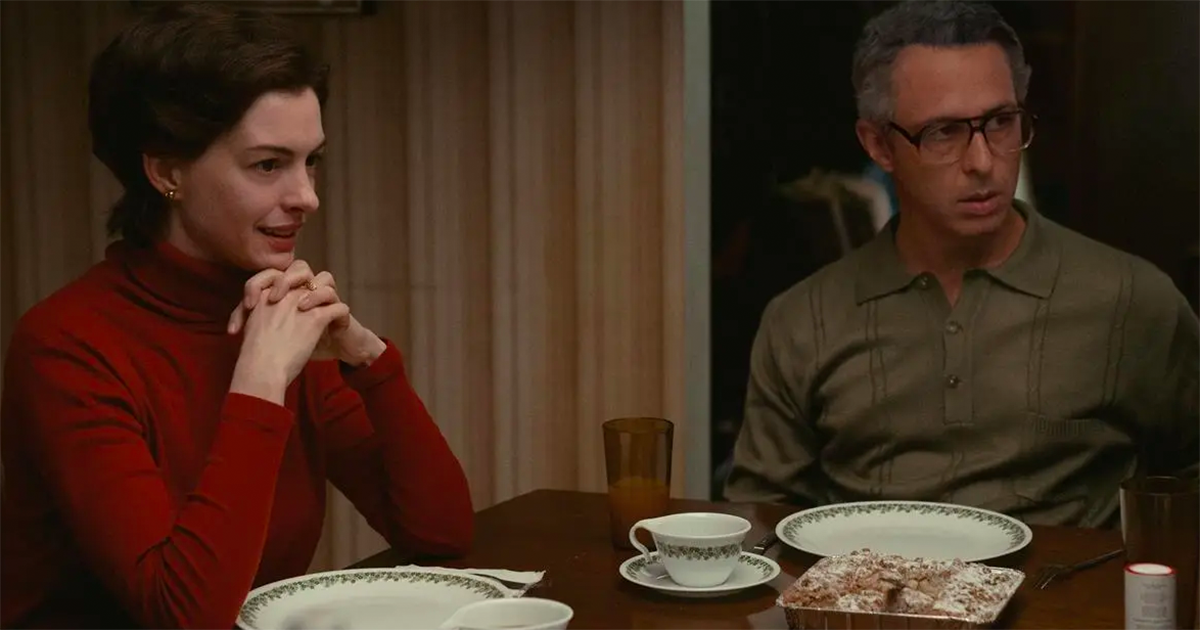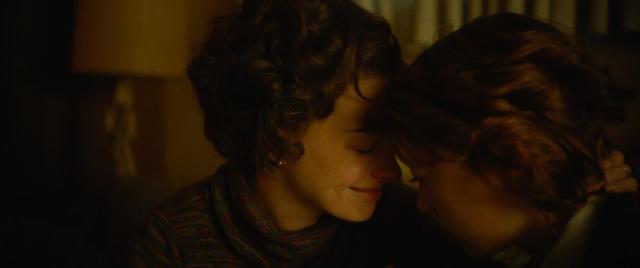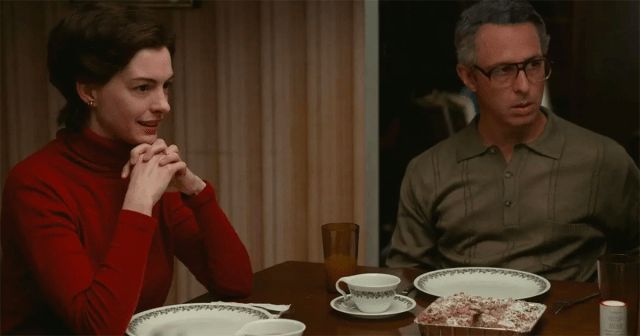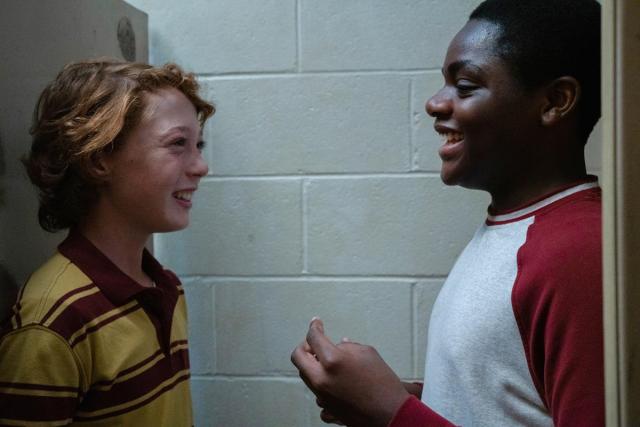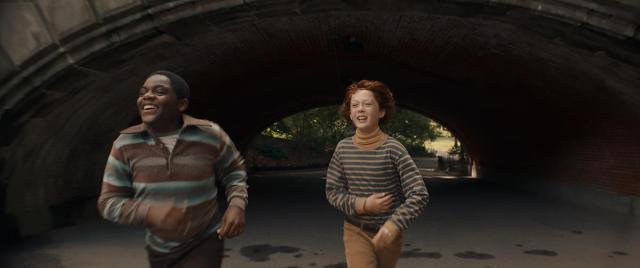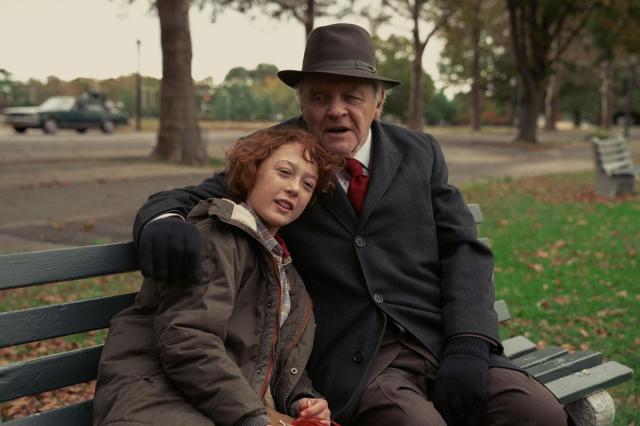To really appreciate the new film Armageddon Time, it helps to understand the writer-director James Gray and his backstory.
On the surface, it’s a coming-of-age film, not far removed from last year’s sleeper hit Licorice Pizza in its nostalgia for the 70s and 80s. Gray’s Armageddon Time is a memory play depicting a mournful chapter from his youth.
The filmmaker talked about his most personal project yet, starring Jeremy Strong, Anne Hathaway and Anthony Hopkins, and the pain of losing the final cut on Ad Astra to multiple outlets.
“The truth of the matter is, you always have to do some condensing,” Gray told MovieMaker’s Tim Molloy about writing the film. “But it’s not far off at all. I tried to stay as personal as I could with the material. I tried to get the details right… to get the plates that we ate off of, and we did; the hat that my grandfather wore, and we did; the chandelier that we had in the dining room, the wallpaper, the kitchen appliances. And those are just the surface elements, of course.”
He added, “It’s not autobiographical, really, autobiographical means [the characters would] have my parents’ names, and would wear exactly what they wore. It’s a little bit of a fantasia of my youth. So it’s personal, but not really autobiographical in that way.”
Born in 1969 and raised in Queens to a family of Holocaust survivors (his grandfather changed the family surname from Greiszerstein when he arrived in the US), Gray shot exteriors just a few blocks away from this childhood locale.
According to IndieWire’s David Ehrlich, Gray’s childhood house looks more or less the same as it did 42 years ago — “but the gate that his father built to box in the garbage cans is the only physical evidence that remains of his family.”
Gray shares how, “When I was growing up in that neighborhood, it was very much an Archie Bunker kind of place. It was a white working-class WASP population, with those nauseating slave statues on a couple of the lawns. Today you go back there and it’s almost exclusively Asian and Orthodox Jewish people, and so in some ways there was a kind of archaeological quality to what I was doing.”
Indeed, Ehrlich believes the film is “perhaps the most lucid and damning film ever made about the specifically Jewish experience of assimilating into the same conditional whiteness that a previous generation had to escape.”
READ MORE: Back in the New York Groove: ‘Armageddon Time’ Director James Gray Talks His Long Trip Home (IndieWire)
That’s because, religion aside, the other theme of the film is race and the adult-run irrational power dynamics that youngsters like Gray seemingly had to navigate. The narrative drive of the film is a friendship between eleven-year-olds Paul (Michael Banks Repeta) — a cypher for Gray — and Johnny (Jaylin Webb) who is Black. Together, they steal an Apple computer from their school. Paul gets away scot-free while Johnny remains incarcerated. It’s based on a true incident that still plays on Gray’s mind. Did it really play out like that?
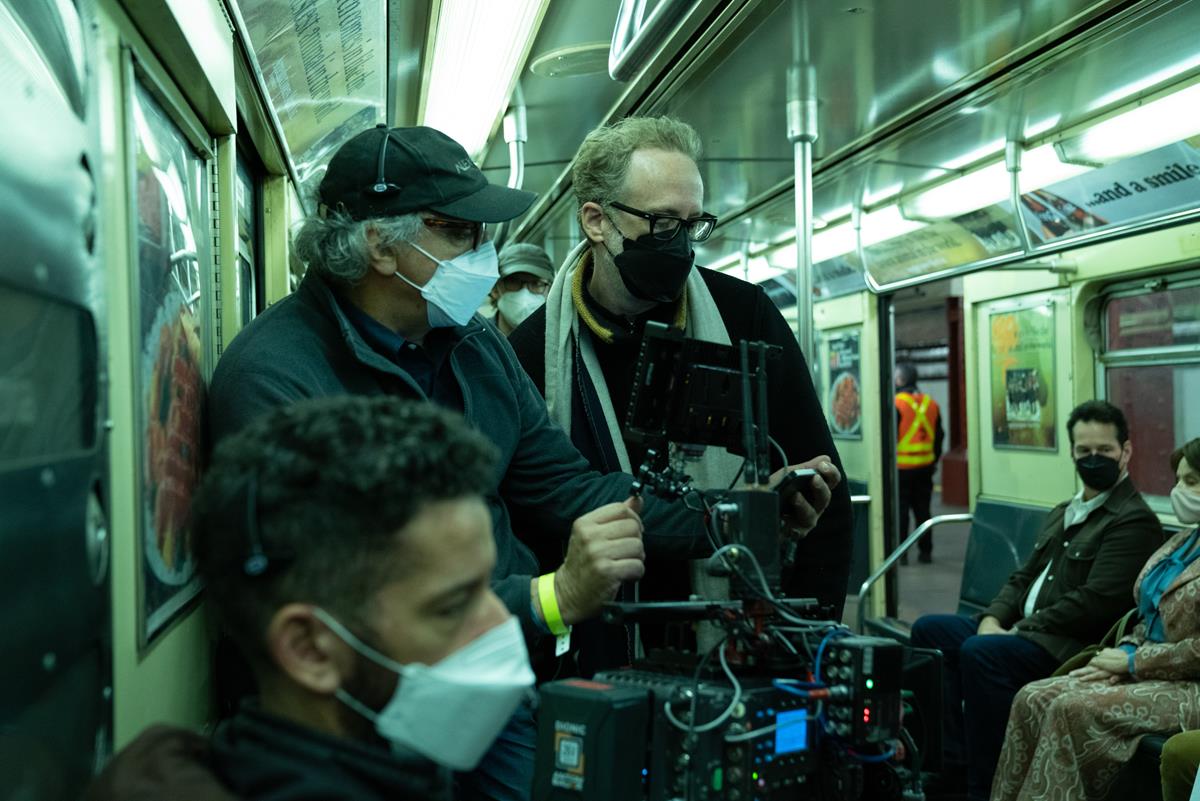
“That was our ultimate plan,” he told Seth Abramovitch from The Hollywood Reporter. “But I stole Star Trek blueprints from Bloomingdale’s, and we got caught. Very expensive blueprints from Star Trek: The Motion Picture. And it was like $50, which in 1979, 1980 was a fortune.”
Abramovitch asks if he ended up in jail: “It ended up with us in this room at Bloomingdale’s with their security people and, basically, he stayed behind,” Gray shares. “My father got me out of there. I never did see him again. [Revisiting that moment] was a way to use the past to reflect upon the problems of the present. And on a plain, personal level, the loss of that friendship was painful for me.”
With the exception of Paul’s doting and wily grandfather, played by Antony Hopkins, the adults don’t come off well in this film.
READ MORE: ‘Armageddon Time’ Director James Gray on the Film’s Tragic Backstory (The Hollywood Reporter)
“Armageddon Time holds Gray’s striving parents accountable for their compromises, but it also loves them for their tenderness,” Ehrlich says. Gray responds that, “of course I wanted to memorialize them,” in regard to these characters (his father died of COVID earlier this year). “I wanted to say that despite all their flaws — and they had many — there was beauty in them to me.”
Most of the people who are portrayed in the film are no longer alive to see it, “which adds to the feeling that Gray made the movie to exorcize many of the ghosts that have haunted his entire body of work,” Ehrlich notes.
One person who doesn’t appear but looms over the picture is Donald Trump. In one of those quirks of fate, Trump’s father Donald did feature in the young Gray’s life albeit tangentially. And he is portrayed in the film, rejecting handouts to the poor while giving them to his own children.
This is considered a return to form for the auteur after Ad Astra which, I for one, feel was unjustly maligned. That it didn’t quite achieve the ethereal quality of classic sci-fi is perhaps down to Gray’s ceding control over final cut in return for landing a larger budget. That’s certainly the way he sees it and he is adamant once bitten twice shy.
“When you don’t have final cut, and when the ideas of others are more important than yours, and you’re the writer-director, then the waters get very muddied,” he shares with Molloy. “And the work is necessarily compromised. Some of that comes down to budget — what the perceived risk is. But I made that choice to give up final cut on Ad Astra, which was a terrible mistake. And so I vowed that, if a film has my name on it, particularly as the writer director, I can’t have that happen again.”
By contrast with a far smaller budget and with just three weeks planned for theatrical release before heading to streaming, Gray says he didn’t compromise a single composition for the small screen.
“The truth is something like 45% of Americans now have home theaters — some outrageously high number,” he says. “So very few people are going to see it in the wrong aspect ratio now. It’s not like 1986 where everyone watched it 1:33. Very few people are going to see it on a very small screen. There are people who are going to watch it on the iPhone, but no amount of compositional help can accommodate for watching your movie on an iPhone. The screen is too small. The biggest closeup in the world is not going to help you out.”
READ MORE: James Gray: How I Made Armageddon Time — With Help From the Beatles and Muhammed Ali (MovieMaker)
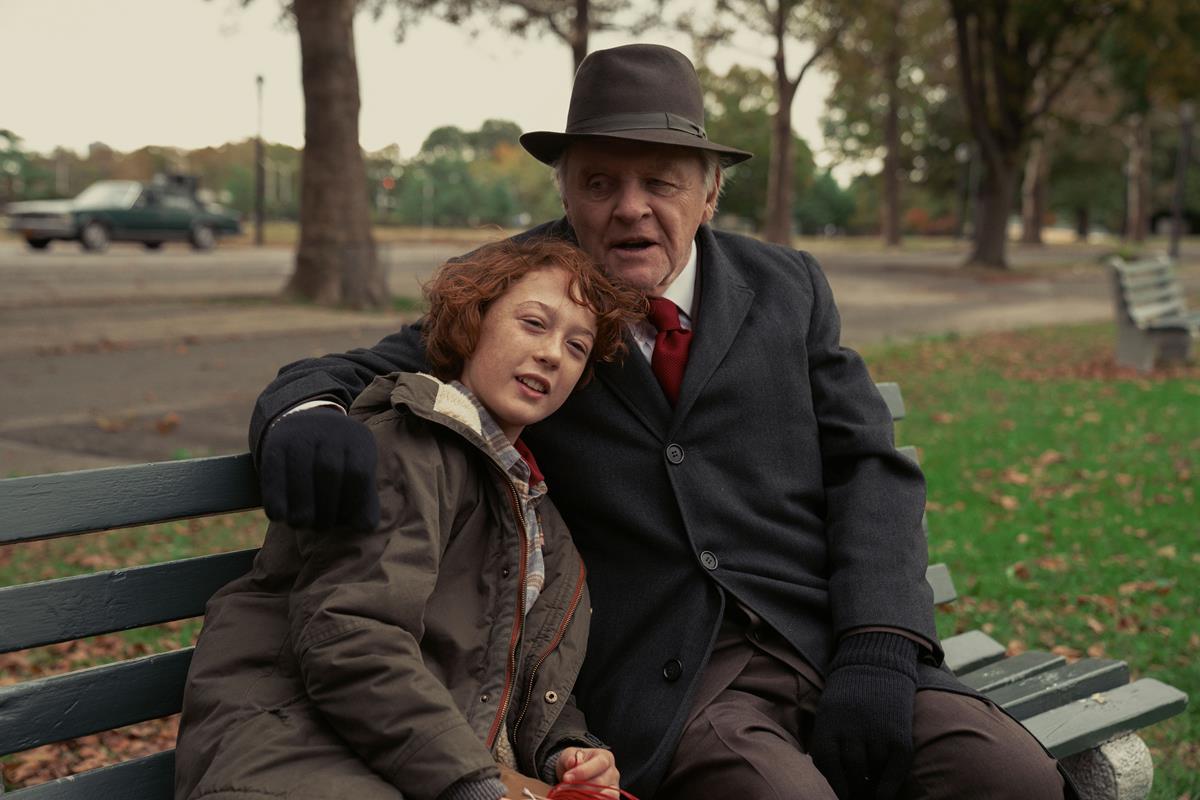
Incidentally, the new film’s title comes from the Clash song “Armagideon Time.”
“I was hugely into the Clash by 1981, so it seemed to fit,” Gray tells Abramovitch. “Then I remembered Ronald Reagan always talking about Armageddon. He was always mentioning the world ending. It was cultural trauma. That weighed on kids in 1980. In the Reagan interview clip you see in the movie, he’s actually talking about Armageddon as a result of homosexuality, which is crazy. He’s talking about Sodom and Gomorrah.”
Next, Listen to This
WATCH THIS: James Gray, Anne Hathaway, Jeremy Strong & More on Armageddon Time | NYFF60
Director James Gray and cast members Anne Hathaway, Jeremy Strong, Banks Repeta and Jaylin Webb sit down to discuss Armageddon Time at the New York Film Festival:
LIGHTS, CAMERA, ACTION! SPOTLIGHT ON FILM PRODUCTION:
From the latest advances in virtual production to shooting the perfect oner, filmmakers are continuing to push creative boundaries. Packed with insights from top talents, go behind the scenes of feature film production with these hand-curated articles from the NAB Amplify archives:
- “Decision To Leave:” Park Chan-wook’s Love Story/Detective Story
- Fantastic Fantasía: Making Alejandro González Iñárritu’s “Bardo”
- “The Banshees of Inisherin:“ Martin McDonagh Tells a Wonderful/Terrible Tale
- Control and Chaos: Todd Field on “Tár”
- Family Pictures: James Gray’s “Armageddon Time”
- She Stoops to Conquer: Gina Prince-Bythewood Goes to War for “The Woman King”
- The Revolution Will Be Televised: Making the Immersive, Explosive “Athena”


